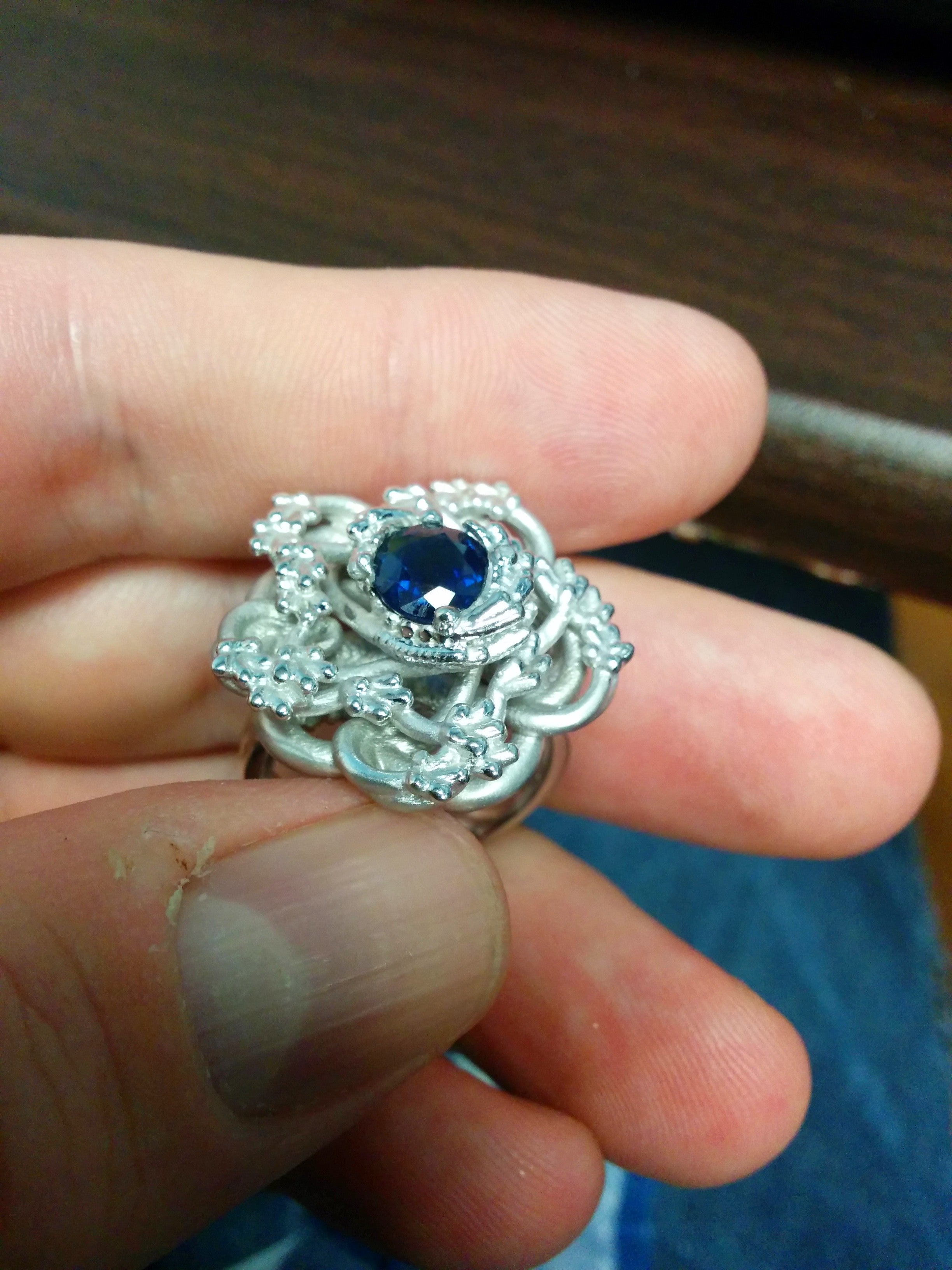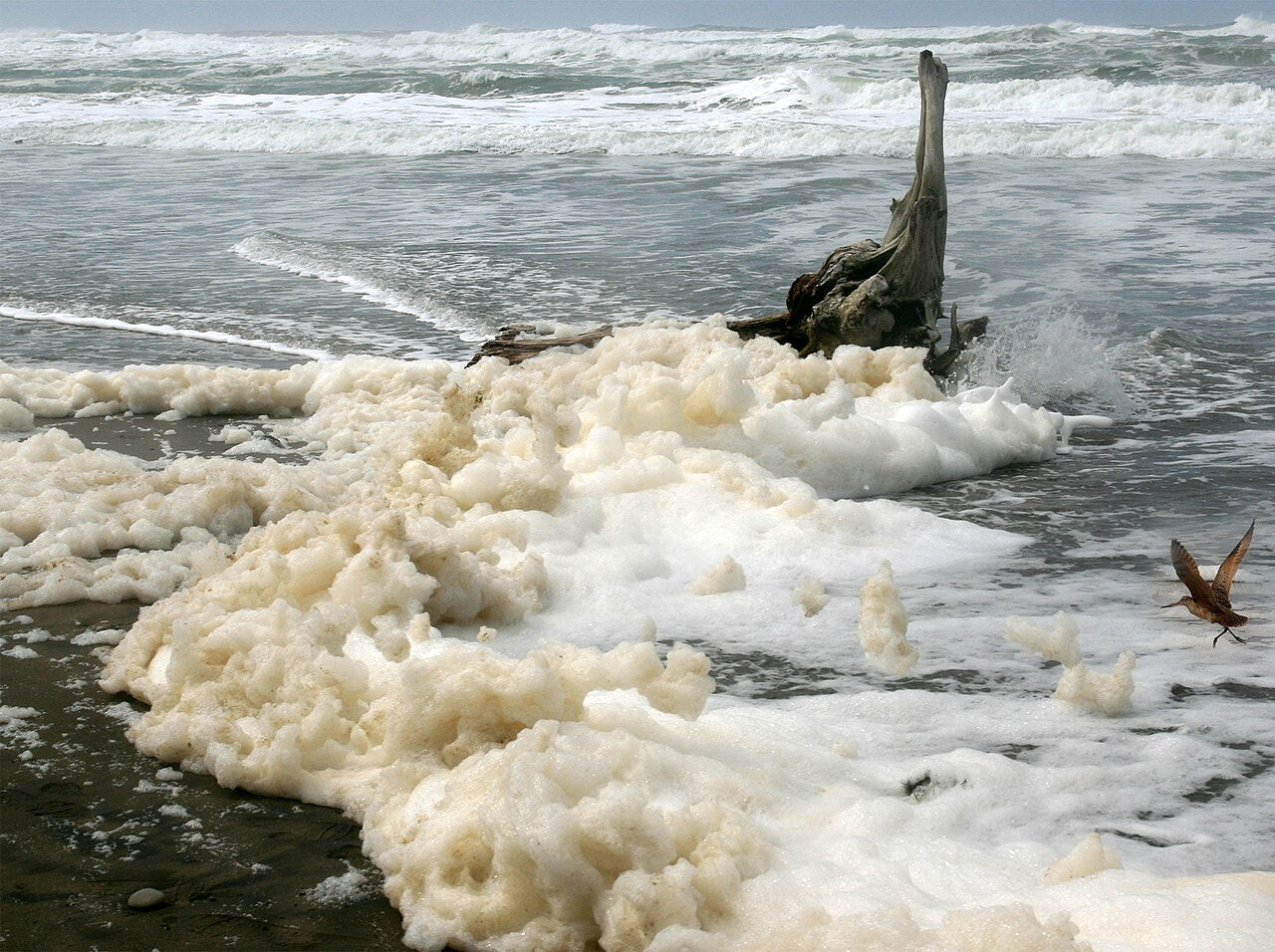
Anti-Meme: An artist statement on Generative AI as it relates to my work
I am primarily a digital artist. My jewelry is designed inside a computer using Computer Aided Design. I draw, but I am not skilled at it. For the most part I do not "touch" my jewelry with my hands or sculpting, it is done through a computer. I primarily generate jewelry using algorithms that I design. So what is the difference between computer aided design, algorithmic art, and AI art? In an age where AI can generate images, and soon things, why do I create art when a neural network can make it with a promp?
This article will try to show how I use computers and AI, and the ethics of my own use of technology. There are different ways peope value art; while some art is valueable because it tells a story or people bless it with the aura of approval, my work is based on gestalt. When you look at it, it looks cool without context. It is the anti-meme. Even if a computer could make generate art better than me (it can't yet), it is my purpose in life to design and program, it is what makes me human.
Outline
- Disclosure: How I use Generative AI
- Non-AI Algorithmic Art: My Artistic Process
- Computer Aided Design in the Age of AI: When does it stop being art?
- Anti-Meme: I do not need AI, or Aura, to make valuable work
- I will continue to make art even if it is worthless to others.
- Creating is a way of thinking, to think is to be human, and humanity is the limit of our potential.
- Ikigai: life-purpose
Disclosure: How I use Generative AI
There are some things that AI help me with. I use AI to help me write code. It is like an auto-complete, or an open browser window to Stack Overflow. It helps me discover new code patterns and best practices, autocompletes tedious work, formats my code visually, adds automatic commenting. I don't think many programmers would argue against this use of AI, of using it to augment or multiply your own craftsmanship.
Another use of Generative AI is in my photography. I work with digital touch-up artist Monyul Sahed to shoot my photography. These images are heavily airbrushed and look artificial, but they look good on a website, and they are made by a human, and they sell the product. Is it dishonest to airbrush the product? It might be, and I struggle with this myself, but when you zoom in on jewelry with a macro lens, it is NOT pixel perfect, there are focusing issues, indentations, microscopic marks from setting or welds that would not appear to the customer. There is also the background. So I send it to my photoshop artist to clean it up, or I do it myself. It is artificial but manual.
I am experimenting with using Generative AI to clean up my photographs with Topaz Labs. Topaz Photo AI takes a light touch, focusing, sharpening, and enhancing the image. You see strands of hair that you couldn’t see before (because they weren’t in the picture). You sharpen the specular highlights. You extend the depth of field through AI enhancement. It looks better than reality but is less artificial than the work Monyul makes. I don't consider this an unreasonable use of AI, to enhance a photo of a real product that I made.
Non-AI Algorithmic Art: My Artistic Process
*The jewelry I make is NOT generative AI.*
First of all, a lot of my design comes manually. Through Computer Aided Drafting, and a little sculpture, knowledge of the mechanics of stone setting and the capabilities of casting. Computer Aided Drafting isn't exactly using your hands, but it is a manual process and an art, as traditional drafters use templates to draw ellipses. That is not AI. I also draw by hand during the ideation process, which I will talk about later.
But when it comes to my computer modeling and creating geometry, I specialize in writing algorithms using agent-based modeling, parametric design, physical simulation, and Voronoi triangulation to generate geometries never seen before. These look complex and biophilic, but they are dumb and mechanical. Sometimes they come to life it seems because of random number generators. I cannot claim to fully control the output of my algorithms, because there is an element of chance in my designs. Happy little mistakes, if you will. Although my work is not entirely deterministic, I take full responsibility for selecting the output and realizing the design in metal. I write these algorithms with code that I write myself, inspired by natural processes and my own imagination. There is no prompt, there is no language model, there is no generative imagery, it is me writing code.
Computer Aided Design in the Age of AI: When does it stop being art?
When does an artifact stop being a work of art? A famous painter makes a beautiful painting. A counterfeiter makes a work of art that looks almost as good as the original. But the counterfeit is worthless. Why? Because the value we place on a work of art goes beyond the product, and includes the non-physical attributes. The same goes for linguistic attributes. The ability of an artifact to communicate through a linguistic or design language is another attribute of the work, not intrinsic physically (gestalt) but intrinsic linguistically. But AI poetry, no matter how skillfully rhymed, is considered slop. The value we place on speech must go beyond the message communicated. As Walter Benjamin teaches, in the age of mechanical reproduction, the value we place on art work is largely imaginary, its "aura". That *je ne sais quois* that makes a counterfeit worthless and AI poetry slop is the lack of Aura, even if they are beautiful or eloquent.
One time I saw a pen that was tens of thousands of dollars because in the tip was a single letter written in Albert Einstein's handwriting. The pen was a good pen, but without that scrap of paper attached, it would be worth a few hundred dollars, not tens of thousands. That is the power of aura, which is not physical, or linguistic, but rather resides in the ideas and narratives our collective consciousness. An artwork is the combination of the gestalt of the physical artifact, the language the design uses to communicate, and the aura associated with the process. Neural networks can generate beautiful forms and words, but it cannot create meaning, that has to be assigned by the humans in society.
Anti-Meme: Baroque++ needs neither AI nor External Validation
Generative AI has the lines and colors of a painting, and it can communicate, but it lacks aura. But truth be told, for me, right now, my work also lacks aura. I am building a brand, I have niche name recognition, and it commands no premium. Some people might think it is cool that I use math to make my designs, but that lacks the aura of hand-crafted artwork. My story isn't compelling; I am just a White male computer nerd making jewelry. So why care about my art?
My work is not worthy because other people grant it approval, it is valuable because it is gorgeous. My designs operate on the gestalt mode, its beauty is self-evident without the need for people to praise it. My work is valuable because I am able to imagine and realize designs humanity has never seen before. I can beat AI at its own game. My imagination cannot be captured by a prompt, my designs exceed AI's imagination, and for now my work doesn't seem to have been stolen off by AI. My work is also three dimensional, and the AI does not have access to my geometry, and as of 2025 generative AI for three dimensional things does not really exist yet.
Memes like Bored Ape Club NFTs and AI-generated slop, are easily created and derive value from going viral. Without others passing the tokens around, the meme has no substance in itself. My jewelry doesn't need to go viral or become a brand name to be considered beautiful. Without any context, when you look at it, it is sublime, or at least I think so. It is the anti-meme.
I will continue to make art even if it can't compete with AI.
Some day soon, AI may surpass my capabilities. An acquaintance I went to architecture school with created beautiful abstract artwork generated by AI, that conceivably could be created by a prompt. I asked her how she did it, because I did not know how to do this. She told me it was AI. While this art has no aura, it was not slop to me, I found it intriguing, and I would love to see it realized as an object. The AI made art that I was not capable of imagining. I do not begrudge those prompt-writers; I place little import on aura, and I was moved by the art produced by the prompt artist. I found it beautiful. Maybe someday my work will seem quaint next to the ability of prompt artists to generate beautiful work. Economically it is already reality that art and artist will become superfluous to Capitalism, and that beauty and meaning can be fabricated with AI and no need to throw artists some coin.
But gestalt, language, and aura are the values of assigned by the *consumer*, the viewer, the other. These are independent of the joy of creation experienced perspective of the artist. The process of creation and thinking this is the real reason artists are not plumbers.
Creating is a way of thinking, to think is to be human, and humanity is the limit of our potential.
I am a middling drawer. It is not my strong suit, and no one would buy my drawings. In spite of this, drawing is crucial in my process. Drawing and writing have value to the creator, because they are a way of thinking. By drawing you can solve design problems, foresee challenges, rapidly imagine a vast possibility of ideas, and teach yourself a deep eye for detail. When you put your art into AI Copilot, you may not see these design challenges. When you let the Copilot write, you are not doing the thinking for yourself. So even if art is mediocre, it is valuable to the artist to help them think. And drawing and writing manually leads to the greatest human potential for thought and is the process by which our ideas are refined and improved upon.
Ikigai: life-purpose
In the book Considerations on the AI Endgame by Ziesche and Yampolsky, the theorize that with AI superintelligence humans will need something to do, a purpose in life. They use the Japanese term Ikigai, which translates as life-purpose, to represent the concept that our human lives need meaning. What will humanity's purpose be after AI makes our efforts superfluous. They theorize it the superintelligence may devise some sort of virtual reality video game for us to amuse ourselves with. Without a purpose humanity will be lost and suffer.
For me, my Ikigai is algorithmic design.
I am an algorithmic artists and my medium is code. I will continue to use my skills to the best of my ability, because it thrills me, but also creating is all I know to do. If AI takes my job as a programmer, and takes my job as an artist, and supersedes my talent and even my imagination, I may be out of a job and need to find a way to feed myself. Maybe I will be a plumber. But how many humans can become plumbers? How long before AI takes over that job too?
But however I feed myself, I will continue to make art and continue programming, not because it is valued by others, but because I enjoy the process of creating, I am naturally inclined to thinking creatively, I abide in seeing myself develop as an artist and I am pleased with the artifacts I make.
I believe it was Alver Aalto who addressed craftsmanship in the age of mechanical reproduction. It is easy for a machine to make shoes. There is no need to decorate shoes by punching little holes in them by hand. But I think he said, let the cobbler make shoes by hand and punch little holes in them for decoration. It is their livelihood, let them show off their craft and decoration, even if it is not functional or necessary.
I had a dog named Hersey who was a farm dog, part collie. We had no cows to herd, but when I went to school, sometimes he would escape and chase after the school bus, trying to herd me back home. Like a sheep dog without any sheep that need herding, or a draft horse without a load that needs pulling, in the age of AI all we can do is make work for ourselves and take joy in what work we have, even if our work is obsolete and not helpful. The cobbler must stick to his last.


Leave a comment
This site is protected by hCaptcha and the hCaptcha Privacy Policy and Terms of Service apply.